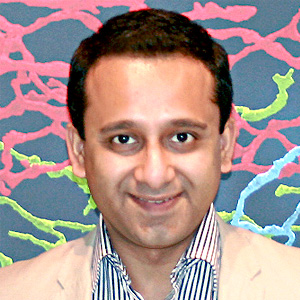-
Computer app helps treat depression in older adults
Published in 21/03/2019 16:52Brazilian and British scientists are testing a software tool that could lower the cost of providing care to elderly patients with depression.Read more + -
DNA sequencing can be used to manage and restore ecosystems
Published in 15/03/2019 12:31Technique known as DNA metabarcoding helps scientists identify species in an area and understand how they interact.Read more + -
LHC scientists seek to understand dark matter
Published in 08/03/2019 19:05Through experiments using CERN’s particle superaccelerator, researchers are trying to detect dark matter and understand the origin of the Universe.Read more +
News
About
In 2019, from February 11 to 13, the São Paulo Research Foundation (FAPESP) will organize FAPESP WEEK LONDON. The symposium aims at strengthening the links between researchers from Brazil and the United Kingdom with the objective of promoting research partnerships and is part of the UK-Brazil Year of Science and Innovation (YoSI) 2018-2019.
FAPESP is one of the major funding agencies for scientific research in Brazil. Funded by the public taxpayer, its mission is to foster scientific research in all fields of knowledge by awarding scholarships, fellowships and grants to investigators linked with higher education and research institutions in the State of São Paulo, Brazil.
FAPESP is aware that the very best research can only be done by working with the best researchers internationally. Therefore, it has established partnerships with funding agencies, higher education, private companies, and research organizations in other countries known by the quality of their research and has been encouraging scientists funded by its grants to further develop their international collaboration.
As part of these efforts, FAPESP has organized symposiums and exhibitions in several countries, in cities and states as Washington, D.C., Cambridge, North Carolina, California, Michigan, Ohio, Nebraska, New York and Texas (US), Barcelona, Buenos Aires, Montevideo, Toronto, Salamanca, Madrid, Tokyo, London, Beijing, Munich and Brussels.
The State of São Paulo has a population of 45 million and generates 32% of Brazil’s GDP. Under the State Constitution 1% of all state taxes are appropriated to fund FAPESP, which was put in motion in 1962.
The stability of the funding and the autonomy of the foundation allow for an efficient management of the resources that has had a sizable impact: while São Paulo has 16% of the Brazilian population and over 30% of the scientists with a doctorate in the country, the state responds for close to half of the country’s scientific articles published in international journals.
The effectiveness of research carried out in São Paulo is the combined result of several factors that include the quality of the state’s universities and institutes, the extraordinary productivity of its researchers, high rates of participation by private, São Paulo-based companies that function within the state’s R&D outlays, São Paulo’s outstanding infrastructure, and the existence of FAPESP, a well-designed state research-sponsoring agency governed, maintained by its directors with excellence and with autonomy over the past half century.
Within this context, in 2017 FAPESP applied $ PPP 523.0 million in scholarships and grants.
In accordance with the Foundation’s funding objectives, 38% of expenditure was earmarked for advancing knowledge, 5% was dedicated to supporting research infrastructure and 57% was allocated to supporting application-driven research.
FAPESP works in close contact with the scientific community: all proposals are peer reviewed with the help of panels composed of active researchers from the specific area. Many times scientists in São Paulo submit proposals for programmes to the foundation which are carefully analyzed and, if deemed strong in academic terms, are shaped by the foundation into research programmes that will constitute a set of related research projects in a given area.
Since FAPESP’s mandate is to foster research and scientific and technological development in the state, ideas for programmes that couple world class research with contributions that will impact social problems are welcome.
Main Topics
- Astrophysics
- Biological Sciences and Drug Discovery
- Health and Ageing
- Industry-University Research Collaboration
- Inequality, Social Inclusion, and Migration
- New Energies
- Scientific Communication in the 21st Century
- Water-Food-Energy Nexus
Programme
February 11th
-
08:30 a.m.
Registration
-
09:00 a.m.

Opening Cerimony
Andrew Allen, Director of International Affairs, Royal Society
Marco Antonio Zago, President, São Paulo Research Foundation (FAPESP)
Fred Arruda, Ambassador of Brazil to the United Kingdom of Great Britain and Northern Ireland
Professor Sir Mark Walport, Chief Executive, UK Research and InnovationAndrew Allen
Marco Antonio Zago
Fred Arruda
Professor Sir Mark Walport -
09:30 a.m.

Keynote Talks
Professor Sir Mark Walport, Chief Executive, UK Research and Innovation
Carlos Henrique de Brito Cruz, Scientific Director, São Paulo Research Foundation (FAPESP)Professor Sir Mark Walport
Carlos Henrique de Brito Cruz -
10:45 a.m.
Coffee break
-
11:00 a.m.
Scientific Session 1: Health and AgeingChair: Richard Aspinall, Coventry University
- View Profile -
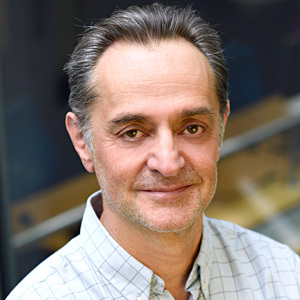
Ricardo Araya
King's College London
Tackling the Emerging Challenge of Ill-Health Among the Elderly in Brazil
The first project is a large and unique randomized controlled trial which has now been completed. We tested a technology platform (CONEMO) for depressive symptoms in people with diabetes or hypertension (LATIN-MH) in Brazil and Peru. This is the first large RCT of an intervention of this type carried out outside Western countries. The intervention consisted of an app with 18 brief mini-sessions based on behavior activation (CONEMO) with limited nurse support using a dashboard. Results are encouraging in the short term (3 months) but gains faded away at 6 months. This is one of the few technological platforms ever tested in an RCT and the results are promising.
The second project is a FAPESP/MRC funded project to test. We completed a successful pilot study and we have now started a large two-arm, pragmatic, cluster randomised controlled trial to test the cost-effectiveness of this community-based psychosocial intervention for elderly depressed individuals delivered by Community Health Workers (task-shifting) employed by existing primary care services in Guarulhos, Brazil. I will present the results of the pilot study and the protocol we intend to use in the RCT which will start on April 2019.
View Profile -
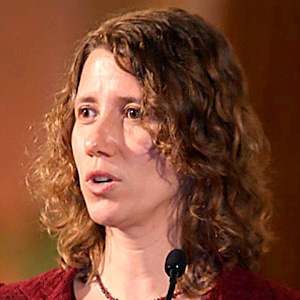
Alícia Kowaltowski
University of São Paulo (USP)
Calorie restriction and aging: the mitochondrial connection
In humans, obesity is associated with increased incidence of a variety of age-related diseases. Similarly, laboratory rodent lifespans are limited by obesity, including that promoted by ad libitum access to standard chow diets. Indeed, a daily limitation of caloric intake (calorie restriction) has been widely shown to enhance lifespans and prevent age-related diseases in rodents. We will discuss the metabolic effects of caloric restriction, and show that mitochondrial form and function are regulated by caloric restriction. We will also demonstrate that changes in energy metabolism promoted by this dietary intervention prevent age-related diseases and modifications in different tissues. Overall, our results show that caloric intake, mitochondrial form and mitochondrial function are intimately interconnected, presenting central regulatory roles in age-related diseases.
View Profile -
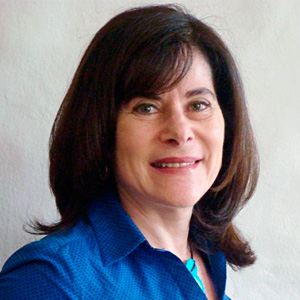
Mayana Zatz
University of São Paulo (USP)
How to be a healthy centenarian?
The human population is aging rapidly throughout the world. The challenge is to increase healthspan not only lifespan. I will discuss briefly how new technologies will contribute to improve our health while we are aging. What are we learning from centenarians? Is there a limit for longevity? What we are currently investigating in the human genome and stem-cell center at the University of São Paulo?
View Profile -
-

Q&A
Questions and answers from the session
-
12:30 p.m.
Lunch
-
02:00 p.m.
Scientific Session 2: Biological Sciences and Drug Discovery
-
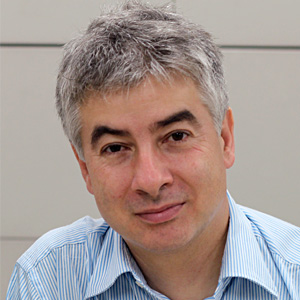
Patrick Varga-Weisz
University of Essex, Colchester and Babraham Institute, Cambridge
Chromatin dynamics and host-microbe interactions in the intestinal epithelium
The gut, especially the colon, is a complex ecosystem where a myriad of microorganisms interact with the host epithelium and aid in the digestion of food stuff and training of the immune system. However, this interaction can go wrong, leading to infections or inflammatory bowel diseases. In fact, accumulating evidence indicates that the gut-microbiome has wide ranging effects on health and disease. We study how changes in the packaging of the genome in the epithelial cells, chromatin, are involved in the crosstalk between gut bacteria and the host. In collaboration with the group of Prof Marco Vinolo, University of Campinas, Brazil, we have identified a novel histone modification, histone crotonylation, that appears to be involved in this interaction (Fellows et al., Nature Communications 2018). I will talk about unpublished work that shows how nucleosome remodelling factors are involved in this crosstalk, too.
View Profile -
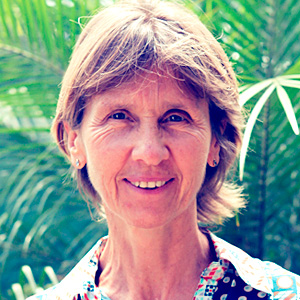
Ana Marisa Chudzinski-Tavassi
Butantan Institute
Animal venoms as tools for the discovery of new molecular targets: Strategies developed by CENTD
The CENTD is a research center focused on the discovery of molecular targets and signaling pathways, implemented at the Butantan Institute, in São Paulo, Brazil, as a result of a typical triple helix collaborative partnership between FAPESP, GlaxoSmithKline (GSK) and Butantan Institute. In it, first-class science is being conducted employing the most modern molecular and cellular biology techniques, including phenotypic multi-parametric assays, interatomic, proteomic, transcriptomic analysis and bioinformatics. The CENTD aims to identify and validate new molecular targets related to immuno-inflammatory and degenerative diseases, like osteoarthritis and cancer, using venoms, toxins and peptides from the Brazilian biodiversity and from other countries. A Biobank was created for the maintenance and management of the venom collection. Pro and anti-inflammatory cell models, tumor cell cultures and tumor translational models were established with the aim of finding active molecules, targets and signaling pathways to allow for the development of innovative medicines. After identification of a potential new target, subsequent validation utilizes molecular biology methodologies like the CRISPR/Cas9 system for gene knockout and expression activation, knockout animals and in vitro and in vivo tests. To date, 19 whole venoms and 28 peptides have been screened for pro and anti-inflammatory effects in 6 cellular models that have been established and standardized, including osteoclasts, chondrocytes, synoviocytes, THP-1 monocyte/macrophage, adipocytes and neurons-like cells. Isolated fractions with potential anti-inflammatory and/or cytoprotective properties have been selected for further validation. In addition, cytoprotective peptides were tested in cell cultures from 10 patients with osteoarthritis (OA) to better understand the molecular mechanisms involved in disease and to find new molecular targets for OA treatment. Concerning cancer models, in addition to studies on tumor cell cultures, we performed transcriptomic studies on spontaneous melanoma tumors occurring in horses in the Butantan Institute`s Farm. Selected tumors were treated with Amblyomin-X, a recombinant Kunitz-type inhibitor derived from a cDNA library from the Amblyomma sculptun tick salivary glands. Amblyomin-X was previously described as a proteasome inhibitor inducing selective cell death in several tumor cells. This molecule promotes endoplasmic reticulum (ER) stress, mitochondrial dysfunction, cytochrome-c release, poly(ADP-ribose) polymerase (PARP) cleavage and activation of caspases in several tumor cell types. Results derived from the transcriptomic analysis of the horse tumor translational model indicate that this molecule triggers immunogenic cell death (ICD) by triggering key molecular pathways. As a general conclusion, the collaborative partnership established in the CENTD could be an effective model for the development of high impact SCIENCE in concert with novel drug discovery.
Financial support: FAPESP/GSK/IBu
View Profile -

Steve Hill
The University of Nottingham
New approaches to study ligand binding to GPCRs and RTKs in living cells
-
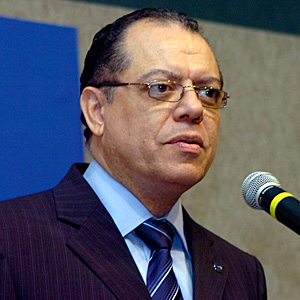
Glaucius Oliva
University of São Paulo (USP)
Structural biology and drug discovery against Zika vírus and other arboviroses.
We will describe our structural biology studies of Zika virus proteins, including the crystallographic structures of NS5 RNA-dependent RNA polymerase, NS3-helicase and NS3-protease, and the ensuing efforts towards the identification on inhibitors and development of novel antiviral lead candidates. We will also report our current progresses in the structural and functional studies of other arbovirus circulating in Brazil, as yellow fever and chikungunya viruses.
View Profile -

Q&A
Questions and answers from the session
-
03:30 p.m.
Coffee break
-
04:00 p.m.
Scientific Session 03: AstrophysicsChair: Walter Gear, Cardiff University
-
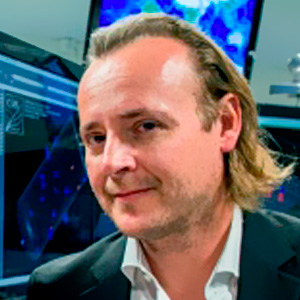
Oliver Buchmueller
Imperial College
The Search for Dark Matter at Colliders
The nature of Dark Matter (DM) is one of the most pressing issues in contemporary physics. For over 80 years, astrophysical and cosmological observations have indicated its existence indirectly. If the DM is composed of weakly-interacting massive particles (WIMPs) that were in thermal equilibrium with Standard Model (SM) particles in the early Universe, freeze-out calculations suggest that the WIMP is likely to weigh O(TeV), in which case it could be produced at accelerators, notably the Large Hadron Collider (LHC) at CERN, Switzerland/France. In this talk we present the results from recent collider searches and a global likelihood analysis within the MasterCode framework of Dark Matter Simplified Models. We combine constraints from the LHC, cosmological DM density indicated by Planck, and limits on spin-independent and -dependent scattering from direct DM search experiments.
View Profile -

Carlos Guillermo Giménez de Castro
Mackenzie Presbyterian University
A Panorama on High Energy Solar Physics: Observations, Instrumentation and Theory
A Solar Flare may release up to 10^32 erg of energy by heating the plasma and/or accelerating charged ambient particles. A non-negligible number of these particles are positive ions that have acquired energies sufficient for nuclear reactions. The pioneering theoretical work of Ramaty and Lingenfelter in the 1960s showed that these ions must be accompanied by highly relativistic secondary electrons and positrons. Since the 1980s gamma-ray detectors for energies around ~100 MeV have demonstrated their presence. However, gamma-ray detectors need to be in the outer space and there has been no solar-dedicated large area instrument so the evidence so far is rather sparse. The same particles, though, may emit at THz and sub-THz frequencies, a range as yet mostly unexplored. In this work we show millimeter and submillimeter observations that may suggest the presence of secondary particles. We then describe present and future instrumentation covering the flare spectrum from micro-waves to infrared. Finally we show ongoing theoretical work to model the expected emission using Monte Carlo simulation of primary ion transport, 3D magnetic field reconstruction of the Corona and synchrotron calculations. The ongoing research has been benefited by a strong durable collaboration between the University of Glasgow in UK and Universidade Presbiteriana Mackenzie in Brazil that extends for around 40 years.
Gimenez de Castro, C.G.; MacKinnon; A., Szpigel S.; Tuneu, J.; Raulin, J.-P.; Valio, A., Simoes, P.J.A.
View Profile -
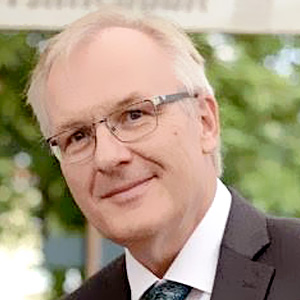
Stefan Söldner-Rembold
University of Manchester
Neutrinos as cosmic messengers
Neutrinos are the most abundant matter particles in the Universe but many of their mysterious properties are not yet understood. Neutrinos could hold the key to understanding the observed dominance of matter over anti-matter.
They also serve as messengers of astrophysical phenomena, such as a galactic supernova. The international DUNE Collaboration is building a 40-kt liquid-argon detector in a former gold mine in South Dakota to unravel many of the fundamental mysteries surrounding neutrinos.
View Profile -
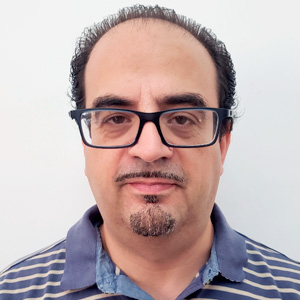
Ettore Segreto
The University of Campinas (UNICAMP)
The Deep Underground Neutrino Experiment: Photon Detection System and ARAPUCA device
One of the most important experimental programmes that will address some of the open questions in neutrino physics is the Deep Underground Neutrino Experiment (DUNE). It will be the first megascience project on the US sole, that actually involves more than 1000 physicists. It will allow to shade light, for example, on the mass hierarchy of neutrino masses and on the Charge-Parity symmetry violation in the leptonic sector, which can contribute to solve the puzzle of the matter/antimatter asymmetry in the Universe. The DUNE foresees the realization of a neutrino beam and of a near detector, both located at Fermilab (USA) and of a gigantic far detector based on the technology of liquid argon time projection chambers that will be installed at the Sanford Underground Research Facility in South Dakota, 1300 km faraway. Furthermore, the huge active mass of the far detector will allow to develop a rich program of non accelerator physics that includes the search for proton decay, the detection of supernova neutrinos and of atmospheric neutrinos. The photon detection system is an important component of the far detector, which will be used for timing, triggering and to improve the energy resolution of the detector for low energy interactions. Its baseline design is based on a device totally conceived in Brazil, the ARAPUCA. Its operating principle is based on the combination of active silicon photon sensors with a passive collector. The latter allows to increase the effective detection efficiency of the active sensors by trapping the photons inside an highly reflective box. The Brazilian effort in developing and designing the Photon Detection System of the DUNE experiment will be illustrated.
View Profile -

Q&A
Questions and answers from the session
-
05:30 p.m.
Closure Day
February 12th
-
08:30 a.m.

Round Table: Industry-University Research Collaboration
Chair: Wen Hwa Lee, University of Oxford
Sérgio Robles Reis de Queiroz, São Paulo Research Foundation (FAPESP)
Isro Gloger, GlaxoSmithKline (GSK)
Helen Ewles, Royal Academy of Engineering
Alexandre Breda, Research Centre for Gas Innovation (RCGI) - Shell
Katlin B. Massirer, The Structural Genomics Consortium (SGC-UNICAMP)
Q&A/DiscussionsWen Hwa Lee
Sérgio Robles Reis de Queiroz
Isro GlogerGSK Trust in Science, a novel model of Public-Private Partnership in Latin America
The Trust in Science initiative was established by GSK in 2011 as a novel model for collaboration between Industry and Academic laboratories in partnership with public funding Agencies.
This model was effectively implemented in Brasil and Argentina and since then it has expanded to other countries in the region.
Since his creation more than 40 research projects have been funded in therapeutic areas such as Oncology, Neglected and Infectious Diseases, Immunology, Respiratory and Metabolic Diseases.
In Brazil GSK established a very strong and effective partnership with FAPESP, allowing the funding of very important projects in key research institutions in the State of Sao Paulo.
Details and strategic perspectives of the model will be presented as well as a highlight of key scientific achievements.
Helen Ewles
Alexandre Breda
Katlin B. Massirer -
09:50 a.m.
Coffee break
-
10:05 a.m.
Scientific Session 04: New EnergiesChair: Geoff Rodgers, Brunel University London
- View Profile -
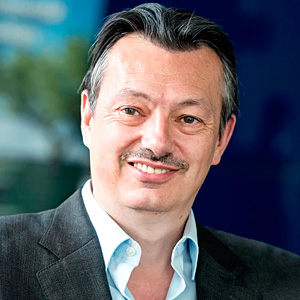
Nigel Brandon
Imperial College
Innovation in electrochemical technologies to support a clean low carbon future
Electrochemical technologies offer highly flexible and highly efficient means to move between energy carried in molecules and energy carried as electricity, and as such have the potential to play a critical role in the transition to low carbon energy systems, whilst also minimising other pollutants. This presentation will introduce the importance of technologies such as fuel cells, batteries and electrolysers in a clean low carbon future, and present some of the latest innovation and progress in the field.
View Profile -
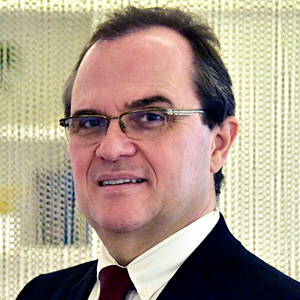
Julio R Meneghini
University of São Paulo (USP)
Energy challenges for the 21st century and the role of innovative technologies: a path to a sustainable future
This presentation deals with one of the greatest challenges for the 21st century: how to cope with an increasing demand for energy and climate change. The role of natural gas, biogas, hydrogen, and carbon capture, usage and storage (CCUS) is discussed with a particular focus on CO2 and other Green House Gas (GHG) emissions, contributing towards the Agenda 2030 of the Sustainable Development Goals (SDGs) of the United Nations. The apparently conflicting tasks of reducing emissions and at the same time increasing the energy production is discussed in the framework of selected disruptive new technologies and innovative devices. The design of labyrinth seals to drastically reduce methane slip, compressors for CO2 in supercritical state, offshore salt caverns for methane and CO2 separation and storage, 3rd generation of supersonic gas separators, molecular dynamics for membrane design, among other technologies are going to be presented as part of ongoing research projects carried out at the Research Centre for Gas Innovation (RCGI), Centre with FAPESP and SHELL as the founding sponsors. These projects are being developed in a multidisciplinary fashion with researchers in areas ranging from engineering, fundamental physics and chemistry, mathematics, energy policies and economics, social science, psychology among others.
View Profile -

Timothy Bugg
University of Warwick
Bacterial enzymes for lignin degradation: generating renewable chemicals from lignin
The aromatic polymer lignin makes up 15-25% of plant cell wall lignocellulose, that is part of the bagasse residue from biofuel production, and is also generated as a by-product of pulp/paper manufacture. In order to make the biorefinery concept a reality around the world, it is important to find routes to convert lignin into renewable chemicals such as bioplastics and industrial chemicals. The seminar will discuss the discovery of new bacterial enzymes for lignin oxidation, such as DyP-type peroxidases and multi-copper oxidases, and the application of metabolic engineering to produce target bioproducts from lignin breakdown, including a new bio-plastic.
View Profile -
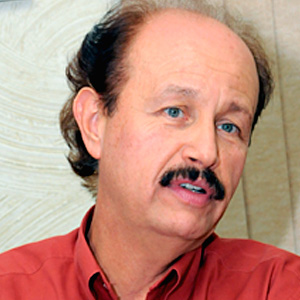
Rubens Maciel Filho
University of Campinas (UNICAMP)
New Energies for a Better and Sustainable World: Challenges and Perspectives
Nowadays with the environmental concern and the need to spread development all around the word new emphasis has to be given for different feedstock besides conventional sources as oil and coal. In this context, biomass may be a valuable feedstock for fuels, chemicals and energy as well as a better use of the available solar irradiation . As it is strongly recognized that environmental changes imply in the reduction of Green House Gas emissions, there are enormous incentives to have new paradigms and process that are not only friendly to human being, but also are attractive economically.
Molecular systems offer the highest energy densities when compared to any form of electricity, however, most of the molecules used as fuel nowadays are processed by non-renewable and non-sustainable technologies. Bio-fuels technologies have proved to be a possible way to have sustainable development, however, an alternative sustainable approach would be use of solar energy (sun light) to obtain high density energy carriers such as hydrogen, methanol, etc, from abundant, low cost, and clean supplies. Solar driven routes to synthesize molecules based on photoelectrochemical (PEC) approach are alternative ways to produce liquid fuels in a sustainable concept.
Energy storage devices such as metal-oxygen batteries and supercapacitors will play important role in making renewable energy accessible. In order to perform that, investigation of devices building and chemistry of the electrode surfaces and electrodes/electrolytes interfaces by means of in-situ and operando characterizations are necessary. The electrode development hinges heavily on material science; high surface area composed of metal oxide and polymer decorated carbon, which are highly stable electrodes are under developed for batteries and supercapacitors. Beyond materials science, electrodes/electrolytes interfaces investigations under dynamic conditions will probably help to elucidate chemical behavior of those energy storage processes.
The large availability of nature gas world-wide turns the attention to methane, CH4, its major component, which is a cleaner energy source than petroleum. Such a scenario has renewed scientific interest in technologies that can efficiently and sustainably convert such feedstock into useful products, however, its conversion to new products is limited due to the high stability of the of the chemical C-H binding. In this context, the use of electrochemical reactions to achieve sustainable and scalable methane conversion processes that can overcome the limitations of traditional technologies are welcome. Such a challenging task requires a multidisciplinary approach involving a strong background on disciplines like electrochemistry, materials science and nanotechnology.
Perspectives, and processes development towards renewable energies will be presented and discussed.
View Profile -

Q&A
Questions and answers from the session
-
11:35 a.m.
Transition Break
-
11:40 a.m.
Scientific Session 05: Inequality, Social Inclusion and MigrationChair: Anthony Pereira, King’s College London
- View Profile -
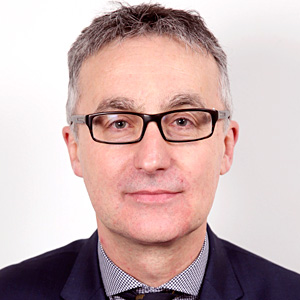
Gareth Jones
London School of Economics and Political Science (LSE)
Inequality, Social Cohesion and Urban Violence
Inequality, social cohesion and violence all represent important contemporary urban challenges. A widely held view is that inequality diminishes social cohesion and significantly increases violence. This paper examines evidence that inequality and violence are linked, with high and rising inequality contributing to increased violence, especially in cities, before analysing the role of social cohesion. I draw from ethnographic research in Rio de Janeiro to provide a critical reflection on social cohesion and conviviality in a context of already high inequality extended through 'gentrification', but falling violence, that had raised anxieties over the meaning of community and who belonged to it. The paper offers methodological challenges and ideas for future research.
View Profile -
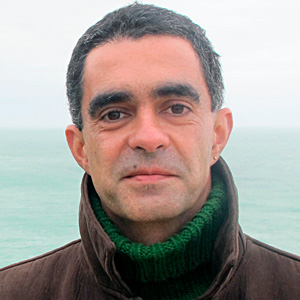
Eduardo Cesar Leão Marques
University of São Paulo (USP)
The politics of urban policies in comparative perspective
Cities are central to our economies, societies and daily lives, but we know relatively little how city governments really work. This gap is caused by a mutual lack of interest in local political institutions by both political science, which considers them as miniatures of the national ones, and urban studies, which believes that important processes lay in society, outside of the State. To help bridge this gap, we have been developing at the Center for Metropolitan Studies a large comparative research on the governance patterns that shape urban policies and politics in São Paulo, Paris, London, Mexico City and Milan, in collaboration with colleagues from these cities. The project has been showing that urban policies and politics present several peculiarities due to their relations with the territories of the cities, influencing the strategies and actions of actors such as local politicians, local bureaucracies, private companies who profit directly from the city and urban social movements. The project intends to shed light on who governs what, and who governs what the govern does not govern in the different policy fields of cities, considering State and not State actors connected by formal and informal, legal and illegal ties and surrounded by specific and historically constructed institutions and urban spaces. By focusing on the basic elements, processes and actors forge governance patterns, the project contributes to more systematic and general comparisons of the policies and politics of large cities in both the Global South and North.
View Profile -
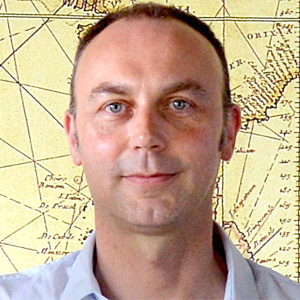
Paul Statham
University of Sussex
Global Migration and Mobilities: Facing the Challenges of Exclusion
Over the last 20 years migration issues have moved from the relative margins to the core of politics and global societal change. This does not mean that migration and ethnic relations are more important today than before, but issues about movement, mobility, and the increasing cultural and ethnic diversity this brings are now seen as important challenges to states, legal systems and how people live with one another. Migration as a subject has become an important interpretive lens through which societies and people understand the core changes that they are experiencing as consequences of globalization. This can be ‘for good’, for example, in public mobilizations to support refugees and people displaced from their homes by international conflicts, or ‘for bad’ in the reactionary populist politics that attempts to justify anti-immigration policies by stigmatising ‘groups’ on religious, ethnic or racial grounds, such as ‘Muslim bans’ and ‘Building Walls’. This presentation will outline some of the core research questions and approaches on Global Migration and Mobilities addressed by my own research and that conducted by other scholars at the Sussex Centre for Migration Research (SCMR) at the University of Sussex. The SCMR is one of the largest and longstanding grouping of migration scholars in the UK, while Sussex has a strong tradition for interdisciplinarity and a global outlook, and is currently ranked no 1 in the World for Development. Projects outlined will include international collaborations on the social inclusion of Muslims and refugees in Western Europe and on Migration and Development issues in SE Asia.
View Profile -

Maria Alexandra da Cunha
Getulio Vargas Foundation (FGV)
Waterproofing Data: Towards engaging stakeholders in sustainable flood risk governance for urban resilience
-

Q&A
Questions and answers from the session
-
01:10 p.m.
Lunch
-
02:15 p.m.

Round Table - Scientific Communication in the 21st Century
Chair: Alexandra Ozorio de Almeida, Pesquisa Fapesp Magazine
Jan Piotrowski, The Economist
Ben Deighton, SciDev.Net
Mun-Keat Looi, Mosaic and The Wellcome Trust
Q&A/Discussions -
03:30 p.m.
Scientific Session 06: Water-Food-Energy NexusChair: Tim Willis, Biotechnology and Biological Sciences Research Council (BBSRC)
- View Profile -

Sacha Mooney
University of Nottingham
NUCLEUS: a virtual joint centre to deliver enhanced nitrogen use efficiency via an integrated soil-plant systems approach for the UK and Brazil
World agriculture has made enormous advances in recent decades in increasing crop production largely through increasing the application of pesticides and synthetic fertilisers. Nitrogen (N) is a key nutrient and often a limiting factor for crop growth supporting the need for the addition of synthetic N fertilisers for most global agricultural systems. However a high proportion of this, often estimated to be >50%, is currently lost into the environment often through the soil via leaching or to the atmosphere as a gas emission. This loss of N to the environment is represents a significant economic loss and pollutes surface and ground-waters, impacting negatively on ecosystems and increasing greenhouse gas emissions (GHG). Cutting across this is our future need to increase agricultural production in order to meet the demands of global food security for the rapidly expanding population. This challenge will necessitate a significant improvement in the management of N and in particular Nitrogen Use Efficiency (NUE) in both Brazil and the UK. The extent to which the release of reactive N can be mitigated to some degree through approaches related to improving agronomic NUE (e.g. using no-tillage systems, intercropping, combined crop-livestock systems, applying organic wastes to soils as amendments is being addressed for the first time in an integrated holistic way between 12 partner organisations in Brazil and the UK. The NUCLEUS Virtual Centre is undertaking interdisciplinary research, with physical and social scientists, using the latest technologies to assess, understand and recommend new strategies concerning agronomic NUE management to support future crop development and food production. As the current level of understanding concerning the integration of these approaches is limited, there is potential for the outputs of NUCLEUS to be a bench mark for tropical and temperate agriculture throughout the world.
View Profile -
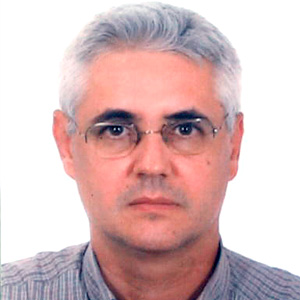
Angelo Berchieri Junior
São Paulo State University (UNESP)
Avian salmonellosis of interest in poultry production and public health
Line of researches: 1. Intestinal colonization by Salmonella serotypes Enteritidis, Typhimurium and Heidelberg with defective genes related to the survival in the gut of chickens. 2. Antimicrobial and genotypic profile of S. Heidelberg. 3. Detection of Salmonella serotypes in laying hens. 4. Flagella versus immune response during the invasion process. 5.Assessment of the commercial products to control Salmonella spp.
View Profile -
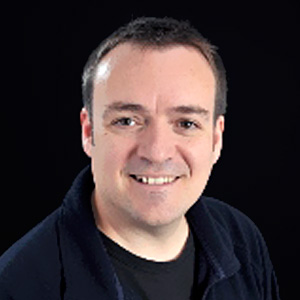
Darren Evans
Newcastle University
Merging DNA metabarcoding and ecological network analysis to understand and build resilient ecosystems.
Merging metabarcoding with ecological network analysis provides a revolutionary opportunity to construct some of the largest, phylogenetically structured species-interaction networks to date, providing new ways to: (i) monitor biodiversity and ecosystem functioning; (ii) assess the robustness of interacting communities to species loss; and (iii) build ecosystems that are more resilient to environmental change. I provide an overview of the state-of-the-art, draw upon recent work examining the impacts of climate change on farmland food-webs and consider the future applications of this approach in terms of building more resilient agro-ecosystems.
View Profile -

Flavio Vieira Meirelles
University of São Paulo (USP)
Cytoplasm inheritance in mammals and effects on pregnancy outcomes
Cytoplasmic Inheritance has for long been recognized in science, however mechanisms governing its effects and dynamics in mammals are much more complex and involve many different players.
This lecture will address the female gamete development, maturation and the cytoplasmic effects on fertilization and early embryo development using animal models. Cytoplasmic contents such as Mitochondrial DNA (mtDNA), RNAs, Proteins, Lipids and organelles are discussed in light of its correlation with the embryo developmental potential, reprogramming, epigenetic and pregnancy outcome.
View Profile -

Q&A
Questions and answers from the session
-
05:00 p.m.
End of Event and Farewell Coffee
February 13th
Organizing Committee
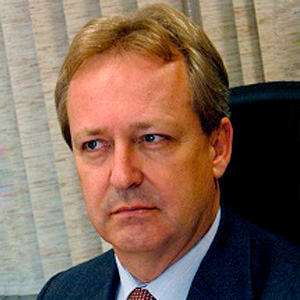
Euclides de Mesquita Neto
São Paulo Research Foundation (FAPESP) / Adjunt Panel - Special Programs and Collaboration in Research
Full professor at the Dept. of Computational Mechanics from the School of Mechanical Engineering at the University of Campinas (Unicamp) and member of the Adjunt Panel - Special Programs and Collaboration in Research at FAPESP. He was head of the Department of Computational Mechanics at (Unicamp) for two terms. He coordinated the Graduate Programs at the School of Mechanical Engineering for one term. From 2009 to 2013, he was vice-president for graduate affairs at Unicamp.




